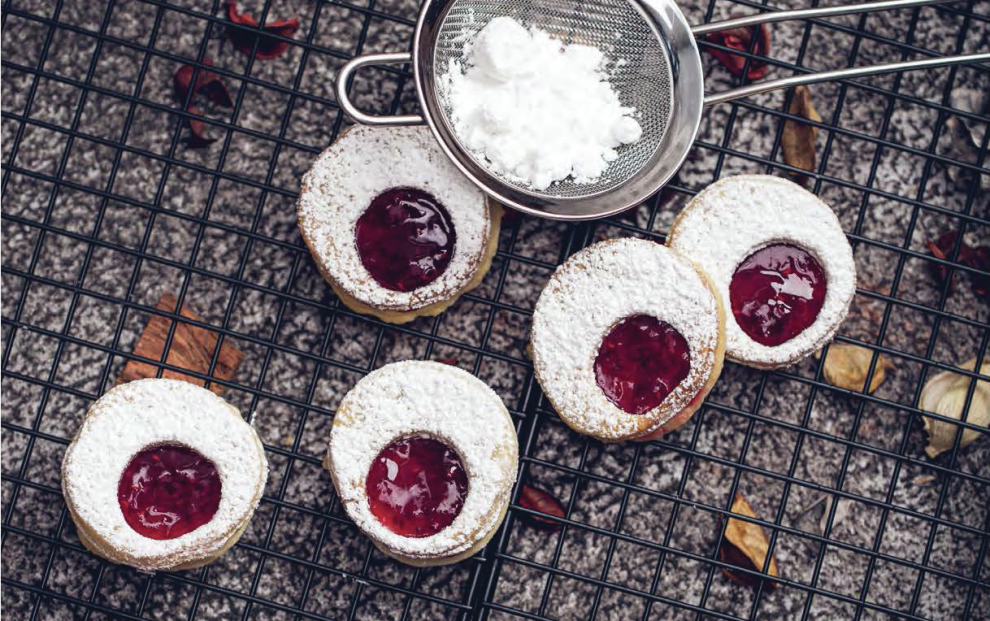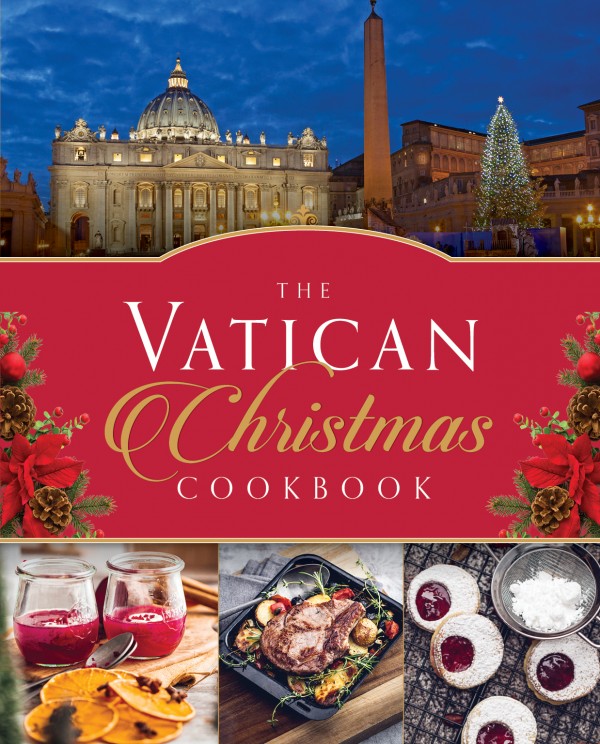The Vatican Christmas Cookbook
By David Geisser & Thomas Kelly (Sophia Institute Press, 2020)
In the first month of the COVID-19 lockdown, sales of King Arthur flour nearly tripled and the bottom line of General Mills rose like yeast, up 75 percent from increased flour and baking mix sales.
We became a nation of bakers and home chefs. We cook for comfort, for something challenging to do, for structure during our homebound days. We now face a holiday season strangely bereft of gatherings and reasons to crank out 14 dozen snickerdoodles and peanut butter blossoms.
It’s an interesting moment for The Vatican Christmas Cookbook (Sophia Institute Press) to arrive. Lauded chef and former Vatican Pontifical Swiss Guard David Geisser, who coauthored The Vatican Cookbook (Sophia Institute Press) four years ago, has assembled an elegantly European approach to the holiday table in a handsome gift book.
Serving sizes are small, presentation is elegant (the food photography by Roy Matter is gorgeous), and the impact comes from the flavor and luxury of the ingredients as well as the time spent at the stove. This cookbook suits the sensibility of lockdown holidays well and offers a sense of travel at a time when most of us cannot.
What Geisser labels Christmas fare is not what Americans typically nosh on between Thanksgiving and New Year’s, and that is one wonderful thing about this book. Geisser’s approach to the holidays is decidedly European, certainly Swiss, and definitely polished. The recipes are not for a novice cook and require solid skill in the kitchen—or at least a fearless sense of adventure.
Like many a cookbook written by a gifted chef, mentions of techniques and terminology are breezy (“let the garlic tighten”). Occasionally missing are bits of useful home cook information, such as numbers of servings or how long it takes to prepare a dish. Plan on looking a few things up on Google while you cook.
We cook for comfort, for something challenging to do, for structure during our homebound days.
Some ingredients are rather exotic, sending American cooks scrambling in a pandemic to locate five slices of gingerbread, wildfond (that’s game stock), or minced rabbit flank. But indulgent dishes are what holiday cooking is all about, and it’s great fun to experiment with pickled peppercorns, capers, buckwheat, almond flour, and a small savoy cabbage (I’m still searching for that one).
The chapters are organized by holiday timetable, beginning with four brief recipes for Advent: two soups, one bread, and buns that look like bird-men and are called “little Santas.” The Christmas Eve chapter includes seductive-looking pastas and, unexpectedly, borscht, along with pizza raclette (this one might be possible to make with a George Foreman grill, I’m thinking).
The bulk of Geisser’s recipes are in the exquisite Christmas chapter. Veal tartare in truffle oil. Venison in fig sauce. Caponata gamberoni. Gourmet mincemeat patties. And the familiar American holiday fare of beef rib steaks and roasted turkey. Matter’s handsome photographs serve as guides to plating these wonders.
Fondue is a Christmas tradition in Switzerland, so the chapter devoted to it makes Vatican sense. The five kinds of fondue joy here are sophisticated and savory, not at all resembling melted Velveeta with bread cubes. They’re well worth rummaging around in the cupboard for that wedding gift from the 1970s.
Perhaps the most European-feeling departure from what Americans view as Christmas tradition is the cookie chapter. No glossy frosting or red and green sprinkles here! These pistachio torrone, anisettes, amaretti, and sables are insistently refined shapes of unadorned dough: simple, unfussy looking, complicated to bake, and perfect with espresso. Chocolate lovers will appreciate the Toblerone mousse.
The recipes are not for a novice cook and require solid skill in the kitchen––or at least a fearless sense of adventure.
Advertisement
A “Christmas Around the World” chapter is a welcome recognition of the international nature of Vatican City and of the worldwide community of Catholics. Yet it highlights holiday customs of only four regions. So although Argentine fajitas and tagine beef are delightful, the chapter overlooks entire continents of culinary possibility and Catholic tradition.
Interspersed among photos of spinach potato gnocchi and roasted trout with fennel and baguette are lush images of Vatican art. Puzzlingly, these are not captioned, so readers are left to wonder what they are looking at and what their historical and artistic significance might be. The back of the book lists photography credits but little detailed information on the images. A missed opportunity to share the glory of the Vatican with readers.
There’s a wee bit of history about the Swiss Guard, but no clarity about what it has to do with the dishes in the book. A page of Christmas history appears here and there, but draws no connections between the Vatican, the Swiss Guard, and specific recipes. There’s no “pope’s favorite cookie” or menu of what’s served to the Swiss Guard every Christmas Eve. “Christmas with the Popes” is a promising name for a chapter, but it includes only four pontiffs and nothing about the current one.
Geisser wrote his first cookbook at the tender age of 18 and trained at leading Swiss restaurants. He is an international culinary notable. His faith and sense of honor at having served in the Swiss Guard are palpable. He has crafted a memorable keepsake book.
The refined approach to dining that is presented here certainly aligns with Pope Francis’ much-referenced love of beautifully prepared food, which he describes as a divine gift from God.
This article also appears in the December issue of U.S. Catholic (Vol. 85, No. 12, pages 36-37). Click here to subscribe to the magazine.
Image: Courtesy of Sophia Institute Press













Add comment